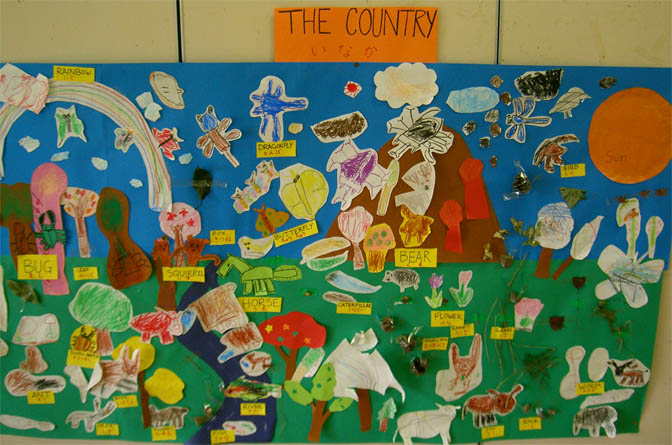
I used to devote many lessons to making giant diaramas with my preschool and kintergarden students, having them create their own little worlds. We made scrolling landscapes of the country, the world, the city, a farm, the ocean, and other environments. By making their own little animals and things to fill their worlds with, the kids easily remembered the English and retained it to a higher extent than methods using TPS or conventional repetitive memorization activities (which actually have a negative effect on the developing attitudes of the students towards learning English in general). They showed a surprisingly high level of sustained concentration and motivation, rare at such a young age, and took pride in their work.
I got this idea from studying the philosophy behind Reggio Emilia, and designed the infrastructure of my lesson plans to pursue the interests of the students in order to engage and challenge them in such a way to help them realize their maximum potential.
Yes, this picture is simple and easy, but the thought that went into its conception, development, and construction took time and ultimately the approach that I took paid off. It’s a delicate balance. If you challenge the students too much, they will develop a negative attitude towards education that may only be apparent after a few years. Yet, at such a young age allowing children to investigate their interests and enticing them to think independently can set these little ones on the right path and give them a head start.
Teaching such young children is a greater responsibility than I had ever imagined, and it was only after I taught for three years in Japan that I was able to fully appreciate the education that I received growing up. Good teachers are arguably the most under-appreciated members in society. This is true for both the U.S. and Japan (to a somewhat lesser extent, but the situation over here is getting worse with time).

|
You are using an insecure version of your web browser. Please update your browser!
Using an outdated browser makes your computer unsafe. For a safer, faster, more enjoyable user experience, please update your browser today or try a newer browser.
|

One Response to English through art